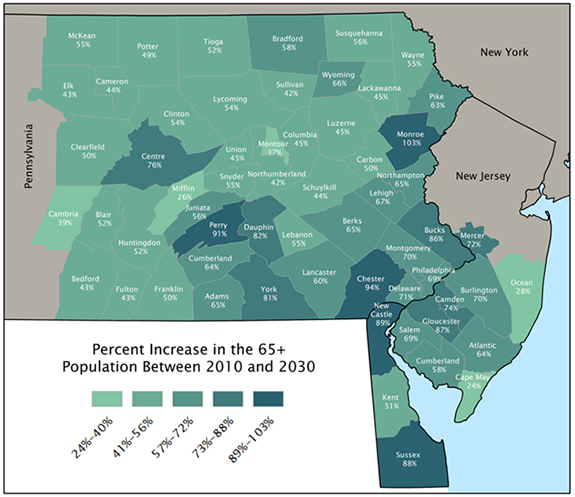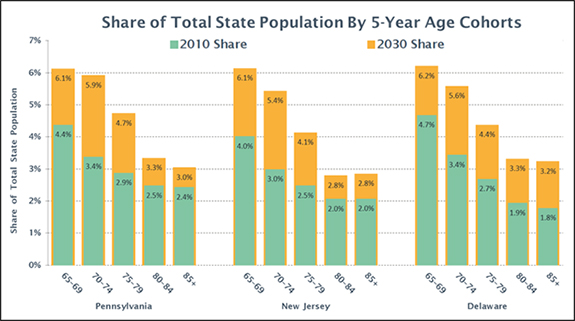In fact, among all the states, Pennsylvania has the fifth highest share of its population in this age group, and Delaware has the seventh highest share. New Jersey ranks 28th on this measure.1 Between 2010 and 2030, the number of older adults in the tristate area is expected to grow from 3.3 million to 5.4 million, reflecting an increase of nearly two-thirds over the period. Viewed another way, older adults will represent a much greater share of the tristate area population in 2030 (22 percent) than in 2010 (15 percent).

The map presents projected population growth rates between 2010 and 2030 for 60 counties in the tristate area. The population of older adults is predicted to increase by at least 24 percent in each county and more than double in Monroe County, PA. The chart depicts the share of older adults in Pennsylvania, New Jersey, and Delaware by 5-year age cohorts in 2010 and 2030. For each cohort, the share is expected to increase, with the greatest increase predicted for the 70 to 74 age cohort.

The views expressed here do not necessarily represent the views of the Federal Reserve Bank of Philadelphia or the Federal Reserve System.
Data sources: Author’s calculations using unrevised 2010 U.S. Decennial Census population counts and 2030 official state population projections for Pennsylvania (available at https://pasdc.hbg.psu.edu/Publications/Projections), New Jersey (available at http://www.nj.gov/labor/lpa/dmograph/lfproj/lfproj_index.html), and Delaware (available at https://stateplanning.delaware.gov/demography/dpc-projection-data.shtml).
Map source: U.S. Census Bureau.
[1]The percentages are highest in Florida (19 percent), Maine (18 percent), and West Virginia (18 percent), according to 2014 American Community Survey one-year data estimates.

